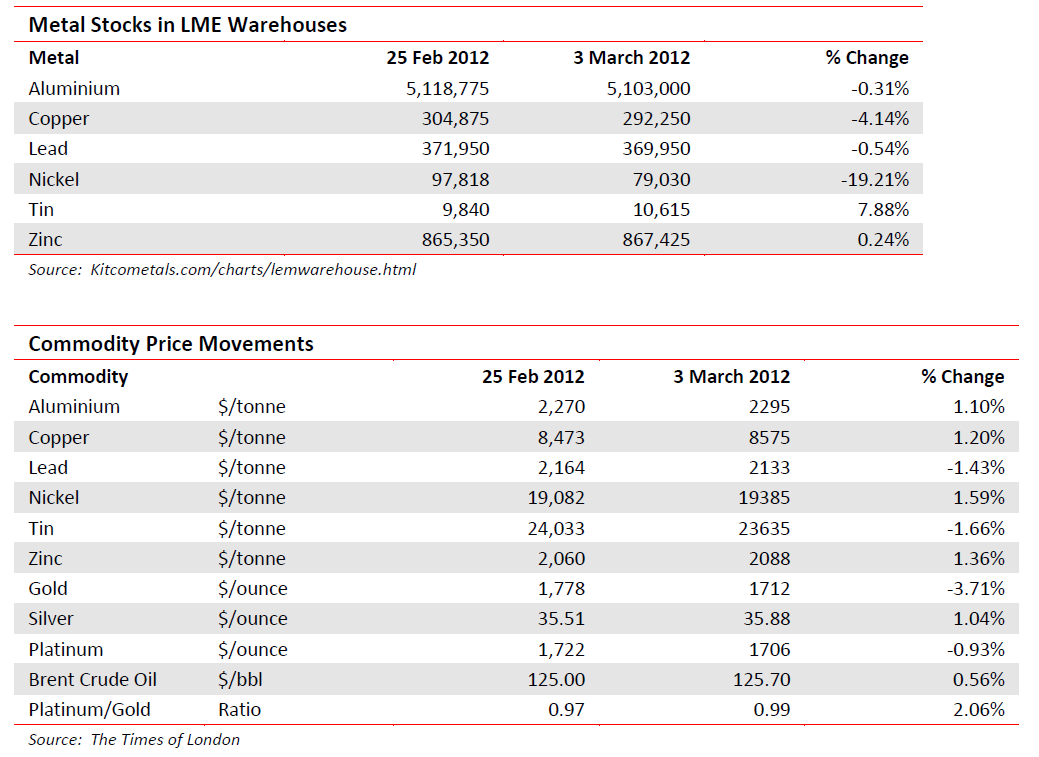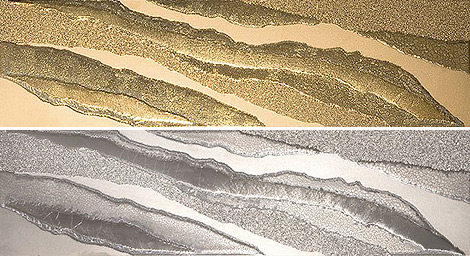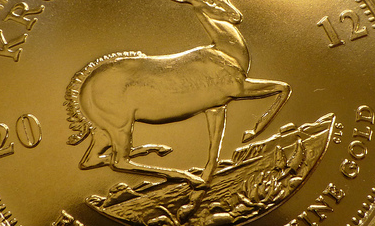Nyheter
David Hargreaves om Exchange Traded Metals week 10, 2012
When is a surplus not a surplus? Both prices and stock levels tell us that aluminium, nickel and zinc have a longish-term sogginess about them, whilst copper is set fair and few presently care about lead or tin. Zinc has been a football for a few years now but to remind ourselves:
Effectively it is 45% below and 79% above, its 7 year top and bottom. The most exposed countries are China and the USA as exporters/importers whilst the company most at risk will be the combined Xstrata/Glencore combine with 15% of mined production and a dominant position in both refining and trading. We see no rapid recovery for zinc, but maybe Glencore does. It has reportedly signed a deal to buy concentrates from Peru’s Volcan (2.8% of world output) for processing without charge, presumably in the hope that the metal price will rise. This is not an unknown stratagem but faith plays more than a walking on part.
Aluminium. When all else fails, talk your own game. Rusal, the world’s largest producer of the beleaguered light metal (10% of total) thinks the other major producers will cut output this year. It looks to the Chinese to take the lead. No real reason why they should. They are the biggest smelters by far, at 40% of world total, but that only matches their domestic demand. It is Russia which has the problem, providing as it does 26% of all exports.
[hr]
About David Hargreaves
David Hargreaves is a mining engineer with over forty years of senior experience in the industry. After qualifying in coal mining he worked in the iron ore mines of Quebec and Northwest Ontario before diversifying into other bulk minerals including bauxite. He was Head of Research for stockbrokers James Capel in London from 1974 to 1977 and voted Mining Analyst of the year on three successive occasions.
Since forming his own metals broking and research company in 1977, he has successfully promoted and been a director of several public companies. He currently writes “The Week in Mining”, an incisive review of world mining events, for stockbrokers WH Ireland. David’s research pays particular attention to steel via the iron ore and coal supply industries. He is a Chartered Mining Engineer, Fellow of the Geological Society and the Institute of Mining, Minerals and Materials, and a Member of the Royal Institution. His textbook, “The World Index of Resources and Population” accurately predicted the exponential rise in demand for steel industry products.
Nyheter
Kopparpriset i fritt fall i USA efter att tullregler presenterats
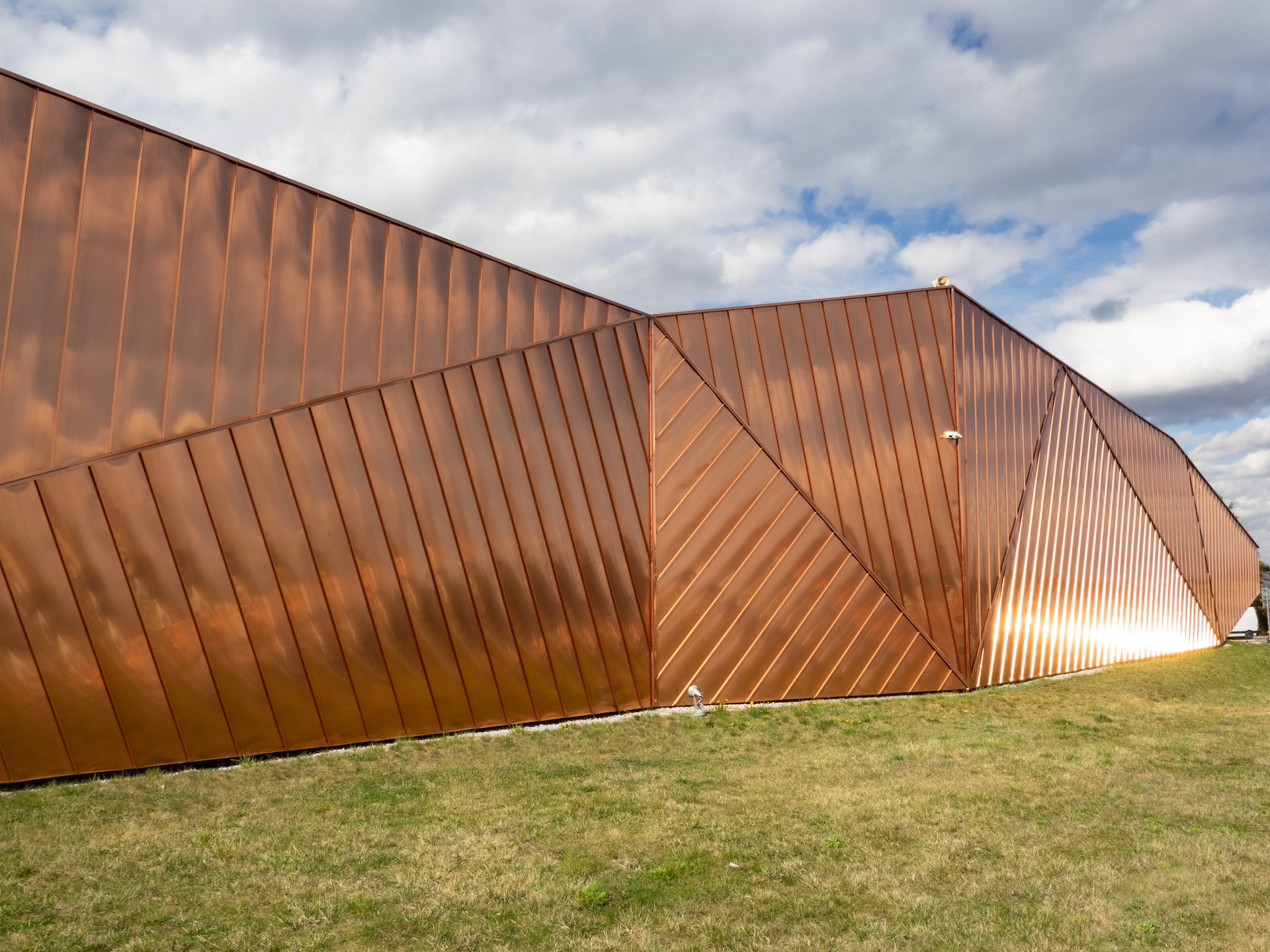
Donald Trump har ikväll presenterat detaljerna kring tullreglerna för koppar som införs från den 1 augusti. Många olika kopparkategorier får tullar på 50 procent. Oväntat var dock undantagen, kopparråvaror såsom kopparmalm, koncentrat, matta, katoder och anoder, samt kopparskrot omfattas inte. Det får kopparpriset på börsen i USA att falla fritt, i skrivande stund är priser ner 18 procent.
Koppar i bilar är undantaget från tull, där gäller ”bara” övriga tullar.
Fokus för koppartullarna är halvfabrikat av koppar, såsom kopparrör, tråd, stänger, plåt och rör, samt kopparintensiva derivatprodukter, såsom rördelar, kablar, kopplingar och elektriska komponenter.
Nyheter
Mängden M1-pengar ökar kraftigt

Den globala tillgången på pengar ökar kraftigt. Mängden M1-pengar i Kina ökade med 4,6 procent jämfört med året tidigare och är på en ny rekordnivå. Även ökningstakten mot tidigare i år är högre. Kinas M1-mängd är nu dubbelt så stor som USA:s. Kinas M1 står nu för 33 procent av G10:s totala M1, vilket innebär att Kina nu är en betydande drivkraft till att öka den globala likviditeten.
Kommer stimulanserna att skapa inflation?
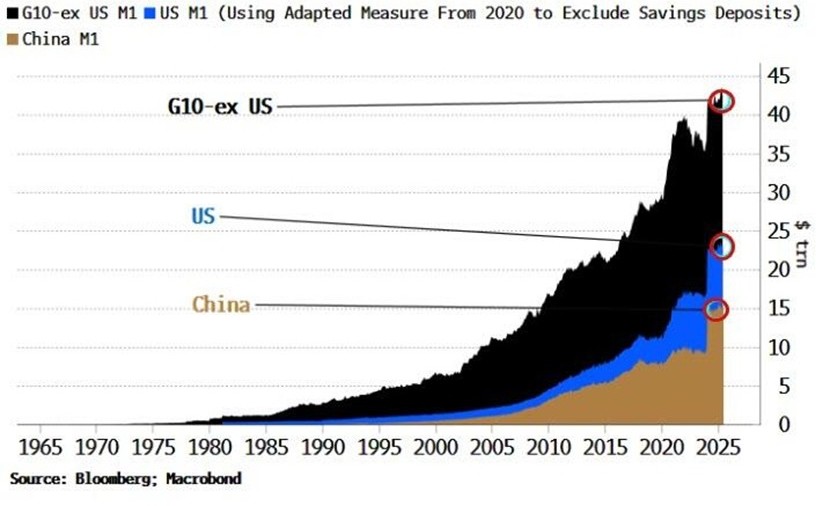
Nyheter
Fusionsföretag visar hur guld kan produceras av kvicksilver i stor skala – alkemidrömmen ska bli verklighet
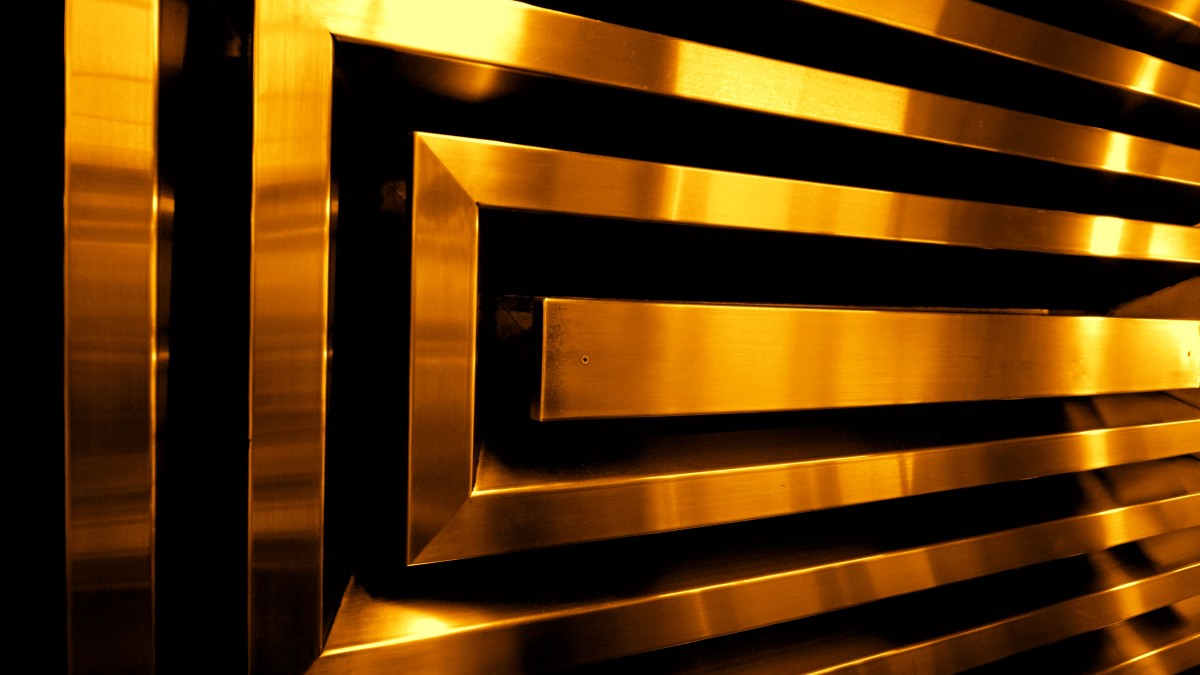
Marathon Fusion i San Francisco har presenterat en lösning på hur alkemin att producera guld kan förverkligas. Detta genom att transmutera kvicksilver till guld. Det hela uppmärksammas även av Financial Times.
Marathon Fusion har tillkännagivit en lösning på alkemins tusenåriga stora utmaning: transmutationen av guld. Företaget uppger att deras metod är massivt skalbar, praktiskt genomförbar och ekonomiskt oemotståndlig.
I deuterium-tritium-fusion driver högenergetiska neutroner ”multiplikationsreaktioner” för att sluta bränslecykeln genom att producera det tritium som behövs för att upprätthålla driften. Genom att använda dessa neutroner för att driva en multiplikationsreaktion på kvicksilver-198, producerar företagets metod kvicksilver-197 som sedan sönderfaller på några dagar till den enda stabila isotopen av guld.
Med företagets metod kan kraftverk generera 5 000 kg guld per år, per gigawatt elproduktion (~2,5 GWth), utan att kompromissa med självförsörjningen av bränsle eller effekt.
18 år innan radioaktiviteten är borta
Guldet kan vara lätt radioaktivt efter att det har producerats och en uppskattning är att det kan behöva ligga i ett valv i 18 år innan det kan användas för exempelvis smycken.
-

 Nyheter3 veckor sedan
Nyheter3 veckor sedanRyska staten siktar på att konfiskera en av landets största guldproducenter
-
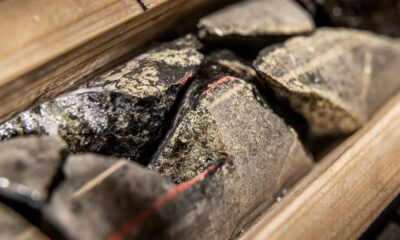
 Nyheter3 veckor sedan
Nyheter3 veckor sedanUSA ska införa 50 procent tull på koppar
-
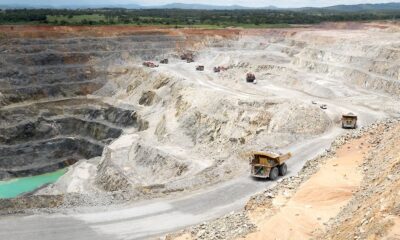
 Nyheter4 veckor sedan
Nyheter4 veckor sedanLundin Mining ska bli en av de tio största kopparproducenterna i världen
-

 Nyheter4 veckor sedan
Nyheter4 veckor sedanSommarvädret styr elpriset i Sverige
-

 Nyheter4 veckor sedan
Nyheter4 veckor sedanHur säkrar vi Sveriges tillgång till kritiska metaller och mineral i en ny geopolitisk verklighet?
-

 Nyheter4 veckor sedan
Nyheter4 veckor sedanSamtal om flera delar av råvarumarknaden
-

 Nyheter1 vecka sedan
Nyheter1 vecka sedanFusionsföretag visar hur guld kan produceras av kvicksilver i stor skala – alkemidrömmen ska bli verklighet
-
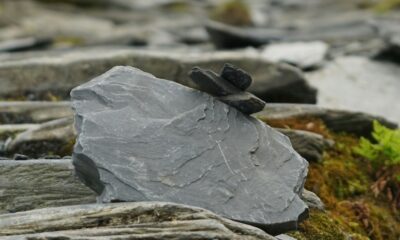
 Nyheter2 veckor sedan
Nyheter2 veckor sedanUSA inför 93,5 % tull på kinesisk grafit



